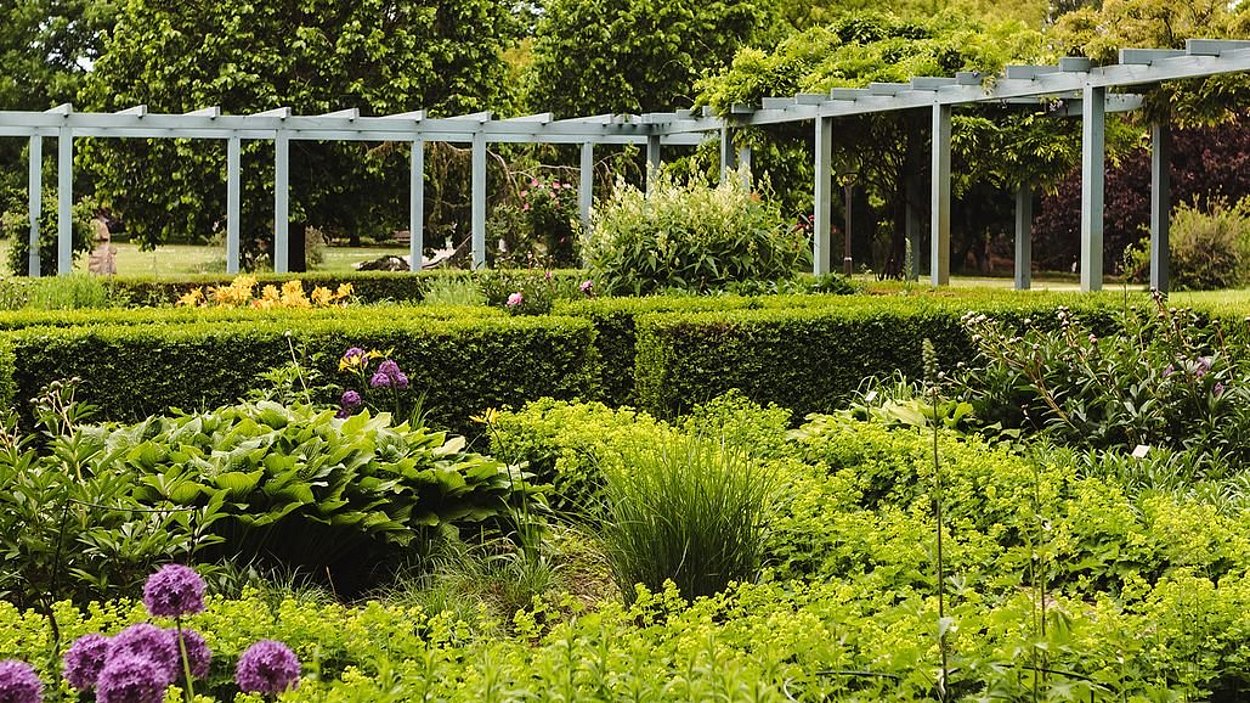Italian Renaissance Garden
Wanderlust farewell!
Italy is a place of yearning. The Italian Renaissance Garden has brought the magic of the famous Tuscan villa gardens to Berlin since 2008, and invites you to dream of the Mediterranean. The design of the garden is based on the stylistic ideals of the Renaissance. Therefore, this garden is the only one that is based on an epoch and not a style. In the Renaissance Garden, creative clarity meets the poetry of antique marble sculptures.

The "Giardino della Bobolina"
You enter the Renaissance Garden through a large, double-leafed wooden gate - and enter a self-contained garden area with a loggia offering space for about 150 visitors during concerts. Immediately coming out of the loggia you enter the main garden.
The four-area main garden takes visitors back to the time of the Italian Renaissance. Between neat beech and yew hedges, in the middle of the garden, you’ll find a stone water feature with a fountain. There, the eponymous Bobolina statue bears witness to the beauty of bygone times. It is an original marble sculpture from the 16th century. The columns, staircases, benches and slabs of the garden are made of light grey sandstone typical of Italian Renaissance gardens.
Below the main garden you will find the "giardino segreto" or secret garden. It is reached via a narrow natural stone staircase. The "giardino segreto" is home to the Roman bronze statue "Idolino", the original of which can be found today in a museum in Florence.

Four is the Magic Number!
Everything is best divided into four: cardinal directions, seasons, elements and pizza. At least, rarely has anyone cut their pizza into three or five pieces. This principle was also heeded by the designers of the Italian Renaissance Garden, who divided it into four parts. A total of four two-part beds with eight corners each fence off the fountain in the middle of the garden. In this way, all the elements of the garden are in equilibrium with each other.










